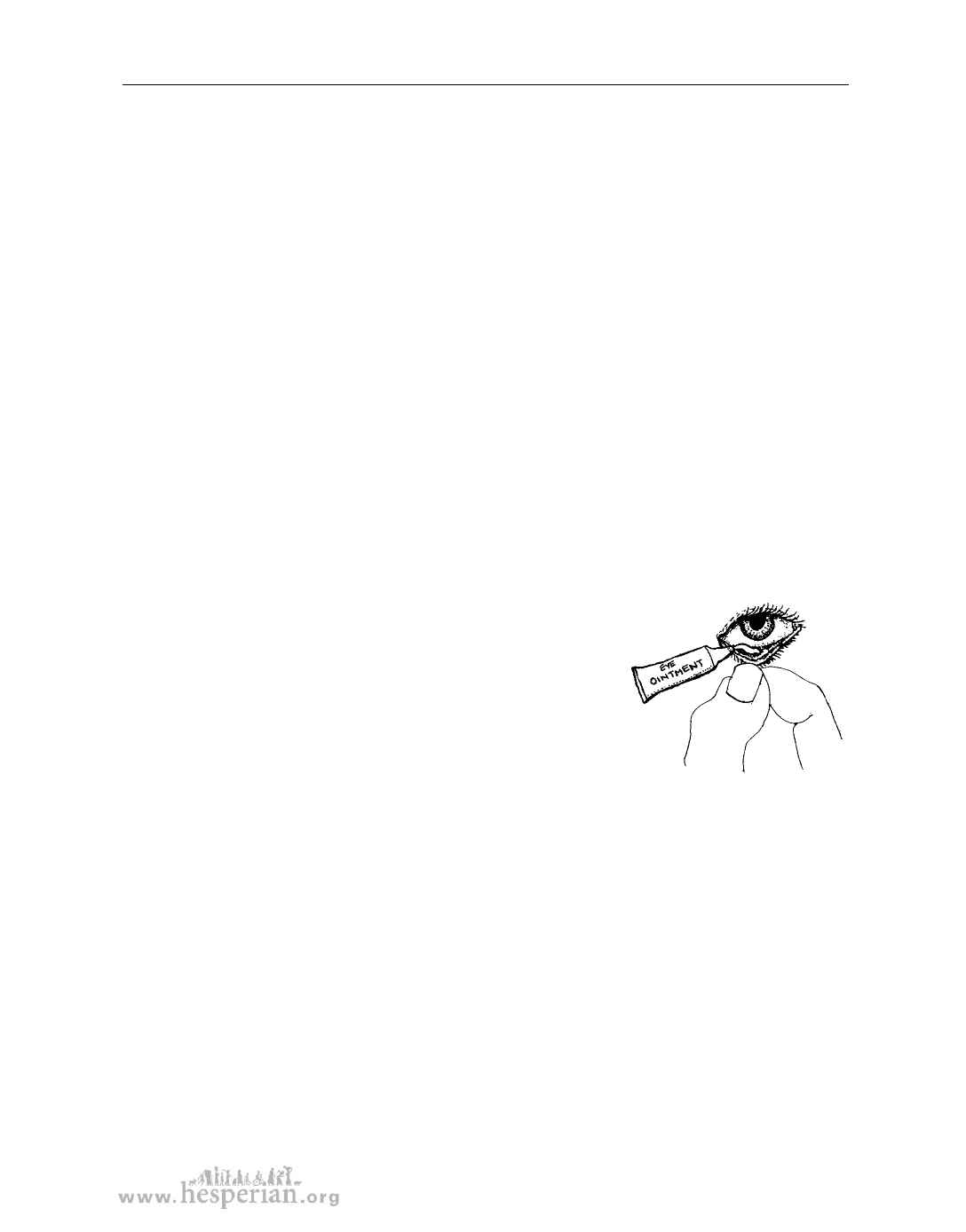
Preventing common health problems 99
Toothpaste is not necessary to clean your teeth. Some people use baking soda
or salt instead. If you have a toothbrush, it is the brush hairs that do the cleaning,
so water on the brush is enough. Use a brush with soft hairs. A brush that is stiff
and hard will hurt the gums, not help them. Be careful if you use a chewing stick.
Some wood is very hard and can hurt and damage the gums. The soft wood from
the neem tree (which grows in many hot countries) works well. You can also wrap
clean cloth around the pointed end of a small stick or toothpick and use it to
carefully clean the teeth one at a time.
Care of the eyes
Wash your face every day with mild soap and clean water. This will help prevent eye
infections such as pinkeye (conjunctivitis). This infection causes redness, pus, and
mild ‘burning’ in one or both eyes. The eyelids often stick together after sleep. Most
conjunctivitis is very contagious. The infection is easily spread from one eye to the
other, and from one person to another.
Do not use the same towel or cloth as someone who has an eye infection. And
always wash your hands before and after touching your eyes. Keep flies away from
the eyes. Flies can spread infection from one person to another.
Treatment:
First clean pus from the eyes with a clean cloth moistened
with water that has been boiled and cooled. Then put in
erythromycin eye ointment (see page 343). Pull down the
lower lid and put a little bit of ointment inside, like this.
Putting ointment outside the eye does no good.
CAUTION: Do not touch the tube against the eye.
If you have leprosy
Some disabilities, such as leprosy, make it more likely a person will develop vision
problems or get an eye infection.
If you have leprosy, the muscles around the eyes may be weak, or may not have
much feeling. This means that your eyes may not blink enough on their own. Not
blinking can cause dryness and eye infection.
If you do not blink often, or if your eyes are red, you can:
• wear sunglasses, especially sunglasses that wrap around the sides of the face.
• wear a hat with a wide brim to shade your eyes.
• close your eyes tightly many times during the day.
• close your eyes tightly and roll your eyes upward frequently.
• wash the skin around your eyes often.
A Health Handbook for Women with Disabilities 2007